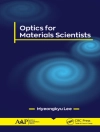As the first comprehensive introduction into the rapidly evolving field of spintronics, this textbook covers ferromagnetism in nano-electrodes, spin injection, spin manipulation, and the practical use of these effects in next-generation electronics. Based on foundations in quantum mechanics and solid state physics this textbook guides the reader to the forefront of research and development in the field, based on repeated lectures given by the author.
From the content:
Low-dimensional semiconductor structures
Magnetism in solids
Diluted magnetic semiconductors
Magnetic electrodes
Spin injection
Spin transistor
Spin interference
Spin Hall effect
Quantum spin Hall effect
Topological insulators
Quantum computation with electron spins
表中的内容
1 Semiconductors
1.1 Overview
1.2 Bulk semiconductors
1.2.1 Band structure
1.2.2 Effective mass
1.2.3 Intrinsic semiconductors
1.3 Doped semiconductors
1.3.1 Mobility
1.4 Layer systems
1.4.1 Semiconductor heterostructures
1.4.2 2-dimensional electron gases
1.4.3 Characteristic length scales
1.5 Quantum wires and nanowires
1.5.1 Electron beam lithography
1.5.2 Semiconductor nanowires
1.5.3 Split-gate quantum point contacts
1.6 Zero-dimensional structures: quantum dots
1.6.1 Transport at small source-drain bias voltages
1.6.2 Transport as a function of source-drain bias voltage
2 Magnetism in Solids
2.1 Overview
2.1.1 Definitions
2.1.2 Magnetization
2.1.3 Classification
2.2 Paramagnetism
2.2.1 Paramagnetism of localized moments
2.2.2 Hund’s rule
2.2.3 Pauli paramagnetism
2.3 Collective Magnetism
2.3.1 Exchange interaction
2.3.2 Stoner-model
3 Diluted Magnetic Semiconductors
3.1 Overview
3.2 II-VI diluted magnetic semiconductors
3.3 III-V diluted magnetic semiconductors
3.4 Transport properties of III-V diluted magnetic semiconductors
4 Spin Injection
4.1 Overview
4.2 Resistor model
4.3 Local description of spin injection
4.4 Detection of spin-polarized carriers
4.5 Experiments on optical detection of spin polarization
4.6 Injection through a barrier
4.7 Experiments on spin injectors with interface barriers
5 Spin Transistor
5.1 Overview
5.2 In As-based 2-dimensional electron gases
5.3 The Rashba effect
5.4 Strength of the Rashba spin-orbit coupling
5.5 Magnetoresistance measurements
5.5.1 Landau quantization
5.5.2 Beating patterns due to the Rashba effect
5.5.3 Gate-control of the Rashba effect
5.6 Dresselhaus term
5.7 Electron interference effects
5.7.1 Weak localization
5.7.2 Weak antilocalization
5.8 Rashba effect in quasi-one-dimensional structures
5.8.1 Rashba effect in planar quasi one-dimensional structures
5.8.2 Rashba effect in tubular structures
6 Magnetic Domains
6.1 Overview
6.2 Formation of domains
6.3 Domain walls
6.4 Magnetic electrodes
6.5 Local Hall effect measurements
6.6 Micromagnetic simulations
6.7 Domain wall motion
6.8 Magnetic race track memory
6.9 Magnetic domain wall logic
7 Spin Hall Effect
7.1 Introductory remarks
7.2 Spin Hall effect basic phenomena
7.3 Spin-Hall effect in Ga As
7.4 Detection of the spin Hall effect by electroluminescence
关于作者
Thomas Schäpers, Research Center Jülich, Germany.












